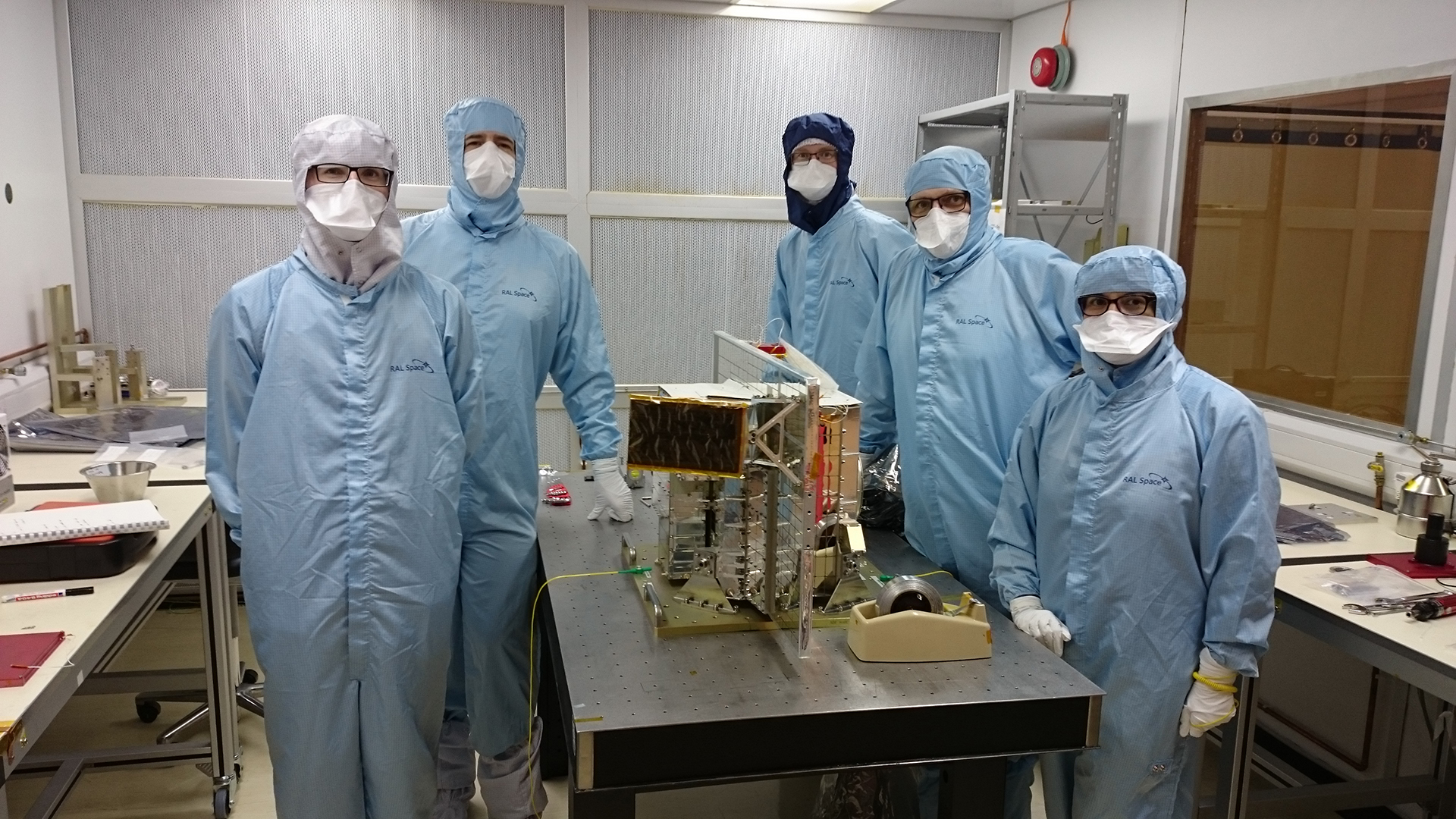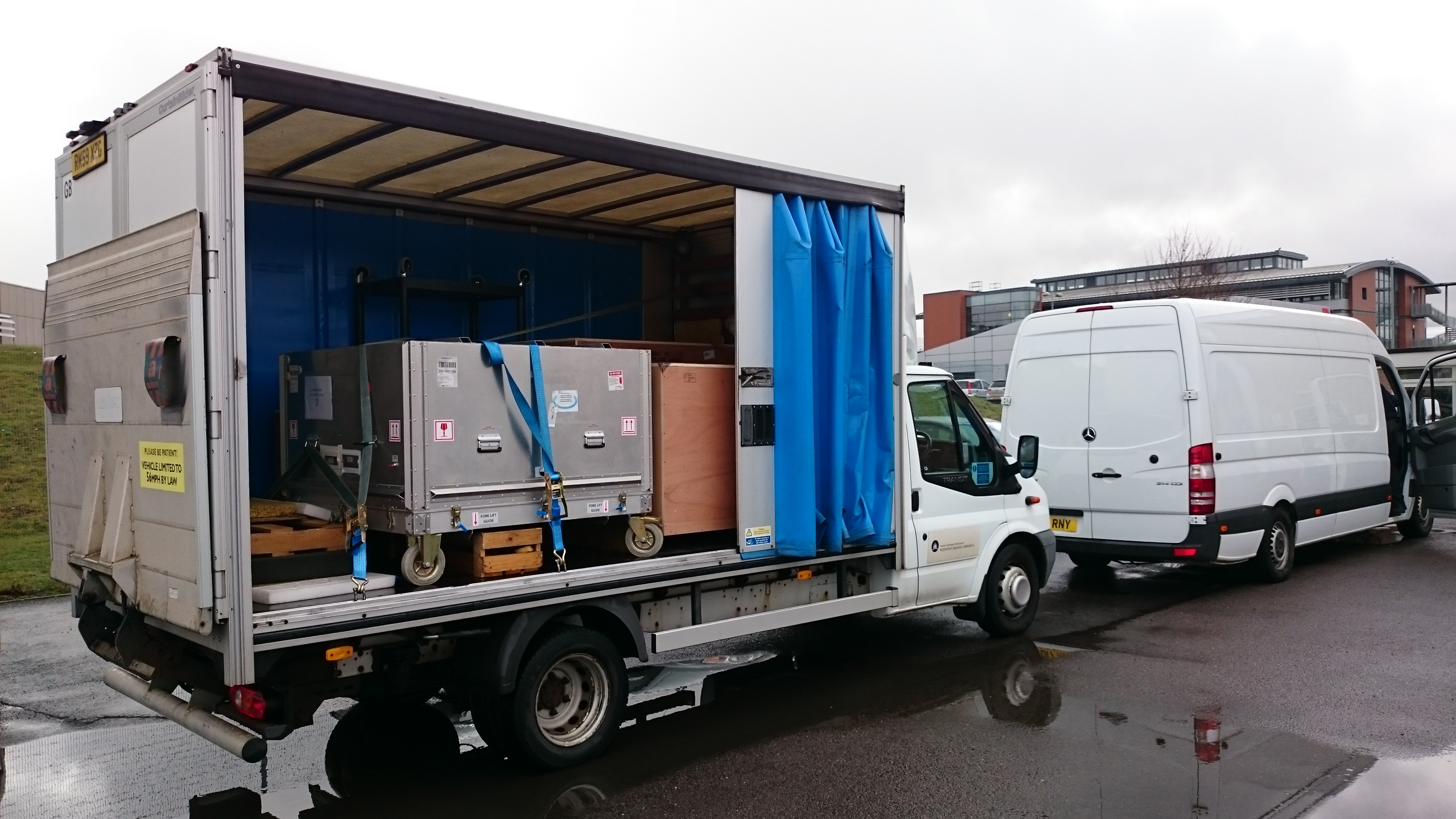The broadband radiometer (BBR) is a scientific instrument for the Earth Cloud Aerosol and Radiation Explorer (EarthCARE) satellite. It is acutting edge piece of engineering that will use three telescopes looking in three directions at once to study the radiance at the top of the atmosphere for better weather prediction. It will look at the relationship between clouds, aerosols and radiation and their combined effects on the Earth's climate system.
This is the latest step towards completing the European Space Agency's most complex Earth observation satellite.
Dr Chris Mutlow, Director of RAL Space said, “The BBR is an innovative and complex piece of engineering which, thanks to our heritage in this area, many RAL Space staff have been involved over the course of its development, build and test. I'm delighted that it's now ready to be integrated with the EarthCARE spacecraft and look forward to the impact its observations will have on our ability to model and understand the processes involved in climate change."
Led by Thales Alenia Space in the United Kingdom, it was delivered from the Science and Technology Facilities Council's RAL Space in Oxfordshire, UK, to satellite prime contractor Airbus's integration centre in Friedrichshafen, Germany.
The EarthCARE mission, scheduled to launch in 2020, will improve our understanding of the relationship between clouds, aerosols and radiation and their combined effects on the Earth's climate system. This high-priority mission will enhance our understanding of the science behind climatology and weather prediction.
The BBR will measure both solar flux and thermal flux, taking measurements across the spectrum from ultraviolet to the far infrared. It comprises three independent fixed telescopes, sophisticated calibration systems and specifically developed detectors to cover the entire spectrum. A significant design and engineering challenge, the BBR will set a new standard in satellite radiometry.
 The telescope assembly was designed and built by RAL Space, building on over 20 years of experience working on innovative instruments for weather forecasting and climate science. The sophisticated design used RAL Space's extensive expertise leading the Geostationary Earth Radiation Budget (GERB) series of instruments, which monitored the reflected sunlight and thermal emissions from Earth between 2002 and 2013.
The telescope assembly was designed and built by RAL Space, building on over 20 years of experience working on innovative instruments for weather forecasting and climate science. The sophisticated design used RAL Space's extensive expertise leading the Geostationary Earth Radiation Budget (GERB) series of instruments, which monitored the reflected sunlight and thermal emissions from Earth between 2002 and 2013.
Thales Alenia Space's engineers in the UK led the design, construction and testing of the BBR. Other British companies and universities made significant contributions to this instrument, including RAL Space. Alongside the optical, mechanical and electrical design for the telescope assembly, RAL Space also provided the thermal design for the whole instrument. The majority of environmental testing, functional testing and instrument calibration was also performed at RAL Space facilities. ESR provided the mechanism assembly and SciSys the onboard software.
“By designing, building and testing the sophisticated BBR instrument, Thales Alenia Space is proud to serve the largest and most complex Earth Explorer mission to date," said Ben Olivier, CEO of Thales Alenia Space in the UK. “It represents ten years of collaborative and constructive work between teams from industry and academia, who have had to overcome tremendous technical challenges. Thanks to their efforts it is the first instrument to be delivered for integration in to the EarthCARE satellite. We would like to thank Airbus Defense & Space for entrusting Thales Alenia Space in the UK and its highly skilled engineers with this landmark mission."

For more information please contact: RAL Space Enquiries
